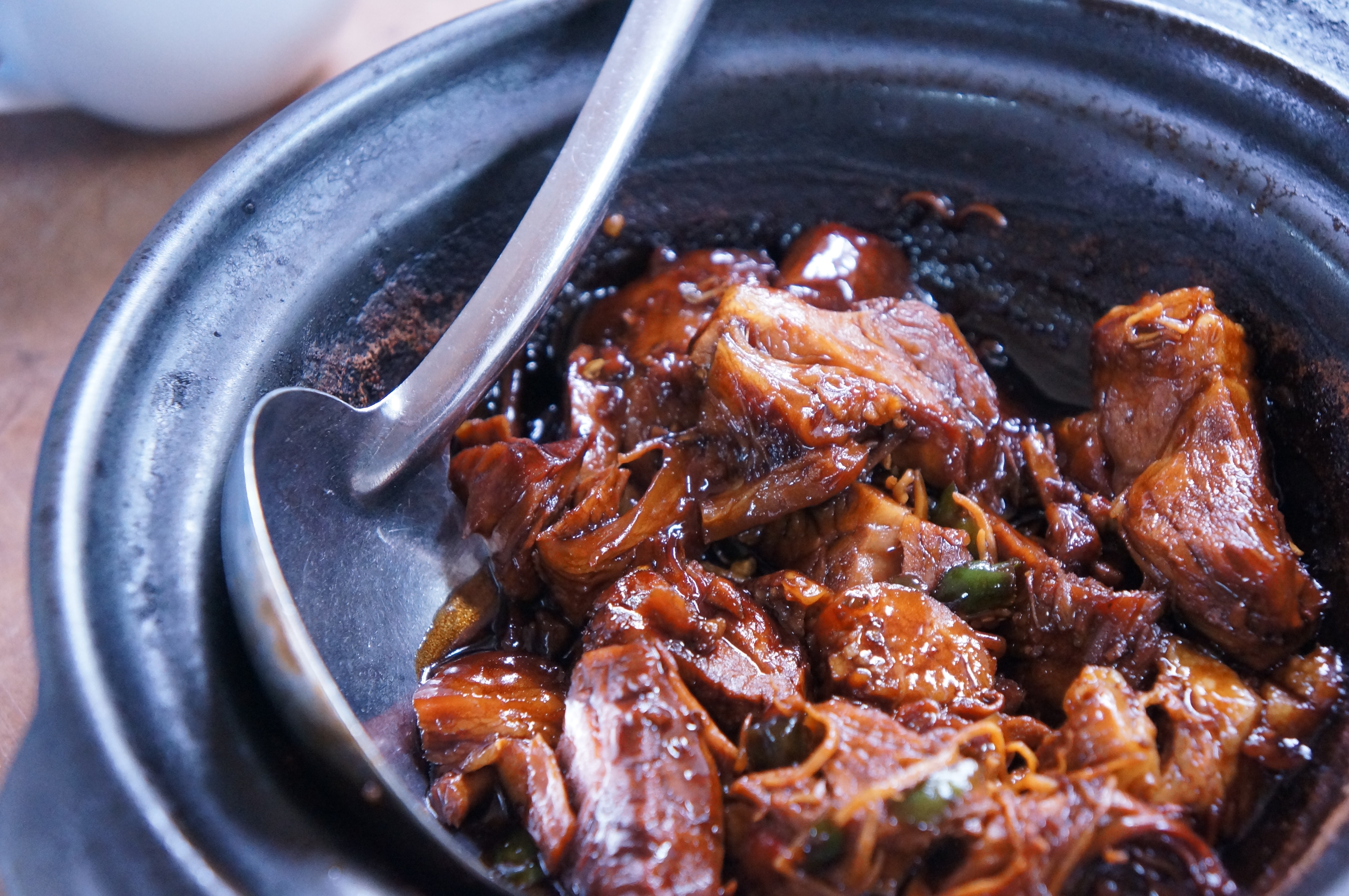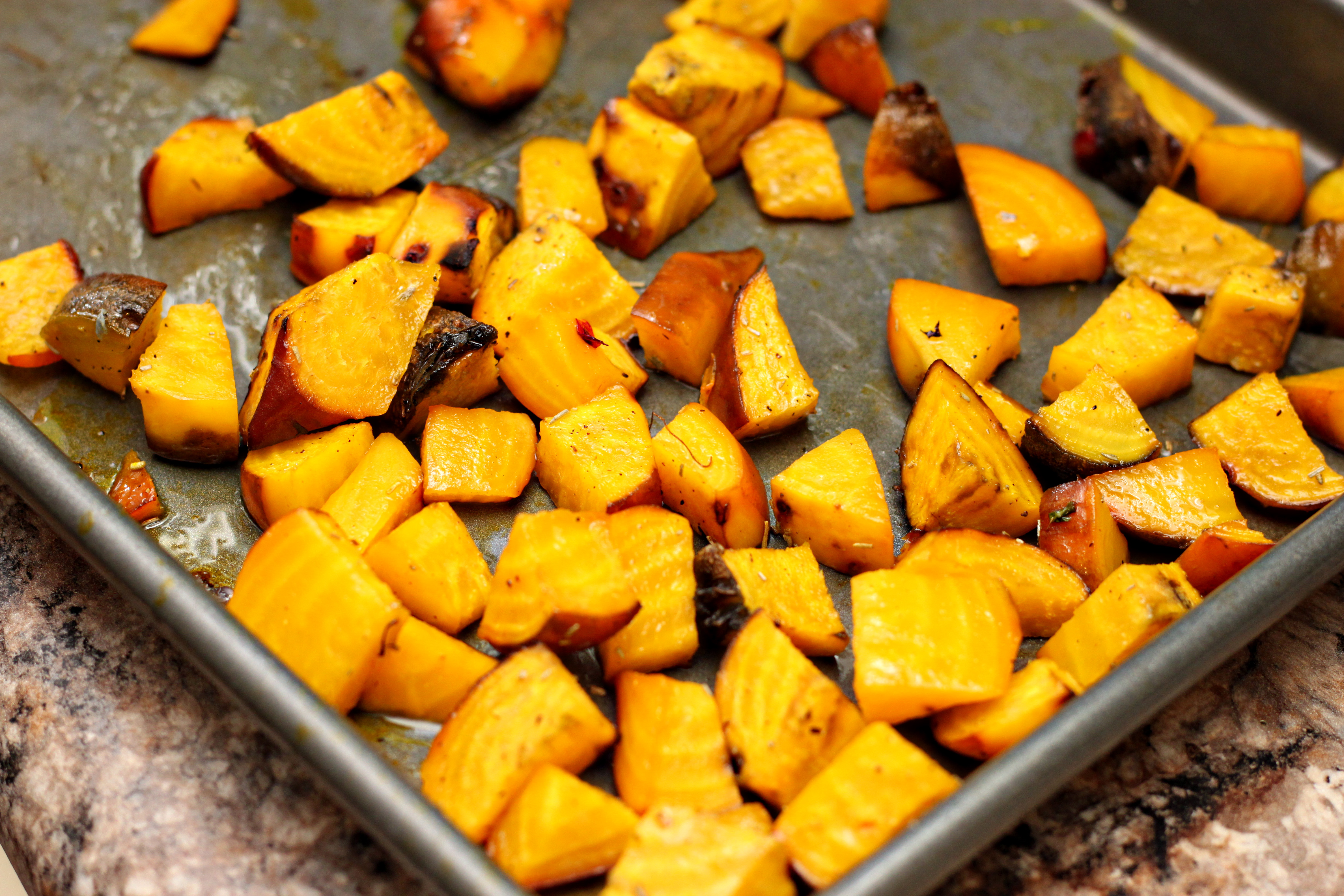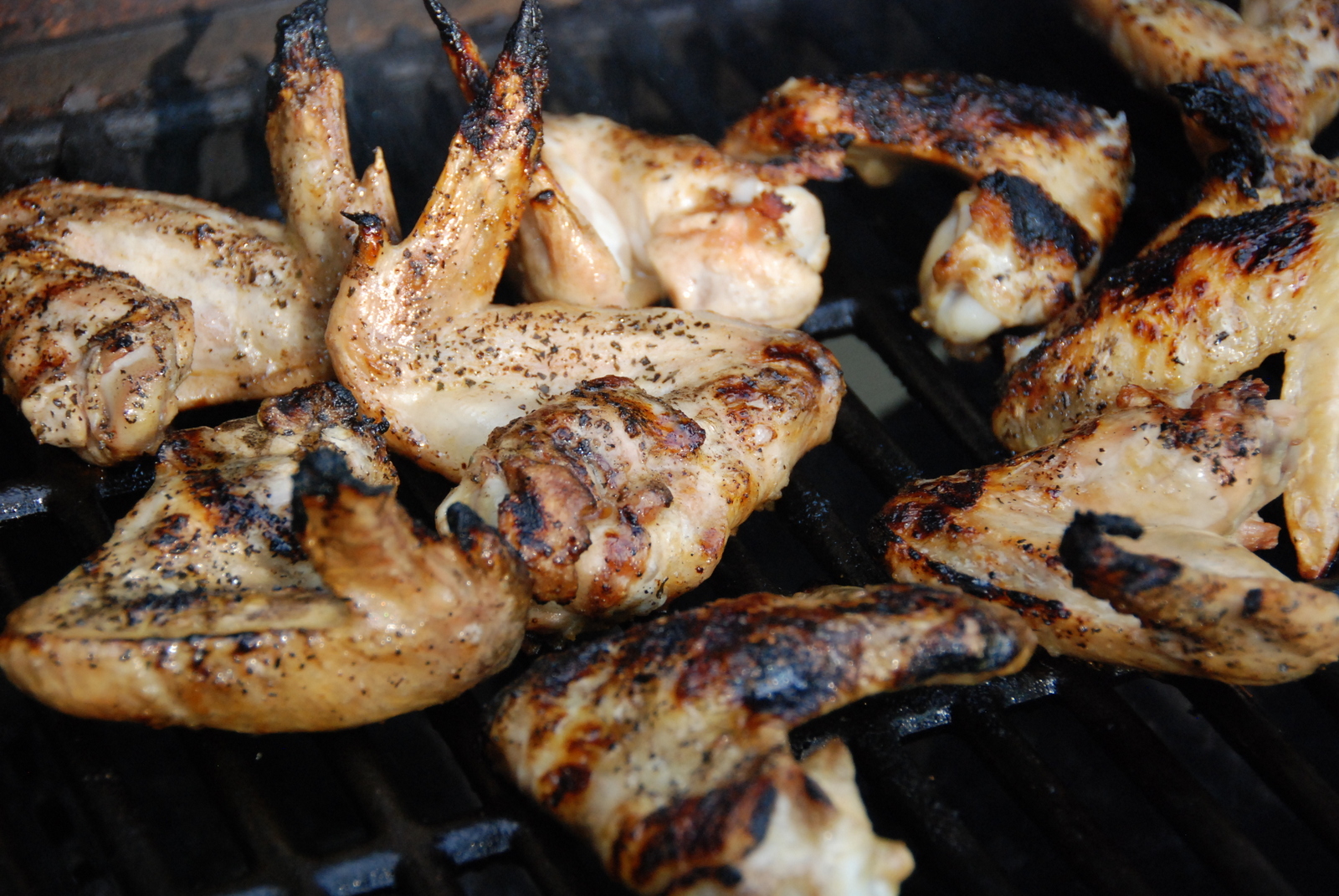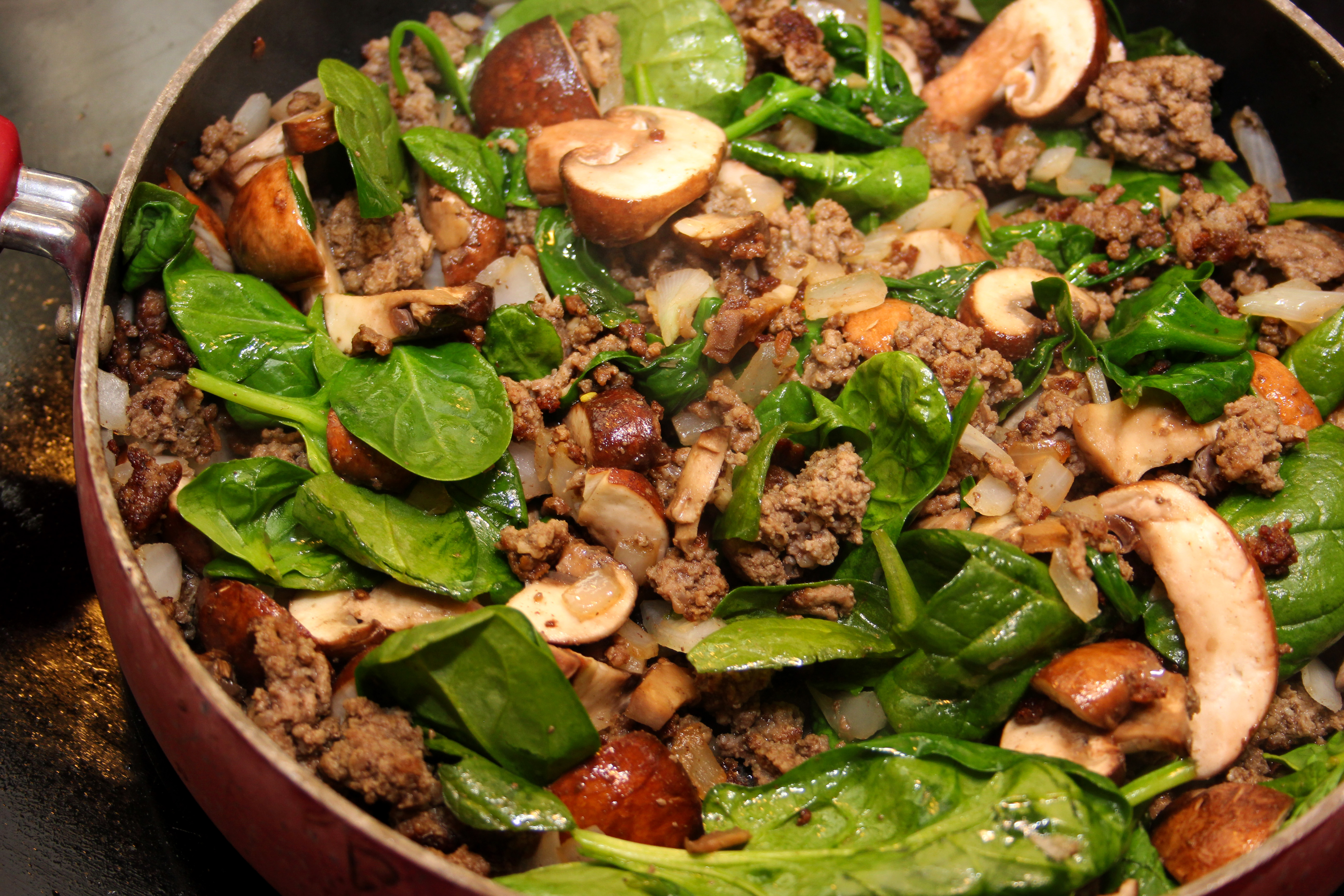One of the best parts about learning to eat healthy is tuning up your kitchen skills. Whether it’s getting excited over new kitchen gadgets or learning new cooking methods, eating better can open an entire new world for you in the kitchen.
I, myself, have gone from the Pizza Roll queen to the Master of the All the Healthy Things (and still pizza rolls sometimes) in the span of a few short years and you can too.
Here are some of our favorite cooking techniques to incorporate the next time you do meal prep or have friends over for dinner.
13 Cooking Methods You Need to Know
1. Braising

Braising is a French cooking method that involves using heat and moisture to bring out the maximum amount of flavor in a dish.
With the braising method, the food, usually a meat, first starts out in a pan, where it is quickly seared (see #2) before it’s transferred to a covered pot filled with liquid — think slowcooker here — where it is finished with a slow roast.
2. Pan Searing
To pan sear a meat or vegetable, all you need is a skillet over a high temperature. To complete the pan sear process, heat up your skillet to a high enough temperature that a droplet of water immediately dissolves.
Then, remove the skillet from heat and immediately add oil or fat and add your meat or vegetable, letting it cook only long enough to form a crust before flipping it to the other side.
This cooking method is quick and is used often with seafood dishes.
3. Steaming
Ideally, you would steam vegetables by using a steamer, but for the rest of us, steaming is still an easy way to serve veggies with a minimum cook time using our cooking dishes.
Remember that some vegetables cook faster than others, but no vegetable takes longer than about ten minutes to cook all the way through when you’re steaming.
If you don’t have a steamer, add a small amount of water to a skillet or pot. The exact amount will depend on how many vegetables you’re steaming, but it shouldn’t be enough to even cover the vegetables in the container.
Then, turn on the heat and add a lid. Use a timer to avoid over-steaming, which will leave you with a big mushy mess of veggies on your hands.
4. Roasting

This is my personal favorite way to enjoy vegetables. Virtually anything in the produce section can be roasted.
My method of choice is cutting up whatever vegetable I’m using, throwing in a gallon size bag, adding oil and seasoning and then shaking them to coat evenly before placing them on a baking sheet and putting them in the oven for approximately 30 minutes.
However, you can chop the vegetables and add them to the baking pan before dribbling them with oil or do it another way. The essentials of roasting are placing vegetables in the oven after you have evenly coated (but not drenched) them with whatever oil and seasonings you’re using. It’s a great way to put a fresh twist on a vegetable you eat all the time.
Roasting is kind of full proof. You can use pretty much any temperature on your oven between 300 and 400 degrees and roast your vegetables anywhere from 25 minutes to an hour. Have fun!
5. Blanching
Blanching is an easy technique used to prepare vegetables to be frozen or to give them a color boost before serving.
To blanche, bring a pot of water to a boil. Add your desired vegetables to the water. After two to three minutes, use tongs to remove the vegetables from the boiling water and immediately place them into a bowl of ice water.
This ice shock makes the vegetables stop cooking, meaning that nutrient loss is minimum and the vegetables look and taste delicious.
6. Brining
Letting meat soak in a brine is similar to using a marinade. A brine is simply cold water mixed with salt, but the effects on the meat after “brining it” or allowing it to soak for several hours, can make the difference between a dry Thanksgiving turkey and succulent, moist turkey meat.
Give brining a try the next time you’re preparing a turkey, a chicken or a roast in the oven and watch the difference it makes.
7. Smoking
Smoking is a complicated but worthwhile process of preparing meat that will leave you with a distinct and delicious flavor.
Like steaming, smoking is best done with proper equipment — a smoker in this case — but a plain old grill will also do just fine.
Smoking is a long process — it can take the good part of a day and requires careful attention to cooking materials such as coal and the type of wood or wood chips used.
The trick with smoking is that the coals going into the grill should already be warm, meaning you’ll have to prepare and heat them up somewhere else, like a second smaller grill. Once they’re warm, you can add them to your grill or smoker through the side. After that, you should avoid opening your grill, period unless it’s to add more coals.
Another trick is that you don’t want your temperatures to get too hot. Use your temperature gauge on your grill to ensure that the temperature doesn’t get above 250 degrees F to ensure your meat will stay moist and flavorful and not dry up on the rack.
8. Poaching
Poaching is a great cooking method for delicate foods such as eggs or meat that falls apart easily — think fish. There are two methods of poaching, both of which involve moist heat cooking methods.
To shallow poach something, get a skillet and add enough water to submerge the food without completely covering it and then turn your stove top on low heat. Add your lid and allow your food to cook thoroughly.
To deep poach something, cover the food completely in liquid and then cover it with a lid, allowing it to simmer for as long as it requires to cook thoroughly.
Poaching can be tricky, especially when it comes to eggs, but it’s a relatively quick method that yields delicious and soft results.
9. Macerating
Want to make a delicious pie filling or fruit topping? Try macerating the fruit beforehand.
Macerating is similar to marinading, but it’s done with fruit instead of meat and vegetables. Fruit can be soaked in anything from liquor or wine to vinegar and syrup. Different combinations will obviously yield different flavors, but macerating fruit can be a fun cooking method to bring out a different flavor or texture from the same old fruit you’ve worked with a hundred times.
10. Grilling

Grilling is an age-old warm weather favorite to prepare food. Although there are many indoor grills you can now purchase to get you through the winter months, there’s nothing quite like meat, vegetables or fruit that have been cooked over a bed of coals.
Although there are different variations of grilling — gas grills verses charcoal grills, marinade and brining versus using a rub — they are all inevitably delicious. Check out this excellent beginner’s guide to barbecuing to learn your way around your grill at home.
11. Sautéing

Sautéing is another fool proof method I use in the kitchen almost every day. Heat up a skillet or pan to a medium to high heat and add a small amount of oil or fat before adding your veggies or meat.
Make sure your food is cut into smaller, uniform pieces and stir it frequently to keep it from burning.
12. Blackening
Blackening is a cooking method reserved for those of us who possess a cast iron skillet. If you don’t, go buy one. It’s a worthy investment.
This cooking method can be used to prepare a variety of meats and seafoods, but is most associated with Creole and Cajun cooking techniques. It isn’t the healthiest way to prepare meat, but it sure is yummy.
You start by melting butter (or ghee) in a microwave safe container. In a separate container, prepare your seasoning mixture. Dredge the meat through the butter before rolling it in the seasoning before throwing it in a hot hot hot cast iron skillet. A thick, yummy crust will form on the outside of the meat.
13. Glazing
Most people associate glazing food with sweets like donuts or cake, but everything from meat to vegetables can be glazed if you’re creative enough.
A glaze is usually a mixture that is painted onto food using a brush before the food is cooked. A glaze can add different hints of flavor without overwhelming a dish easily.
